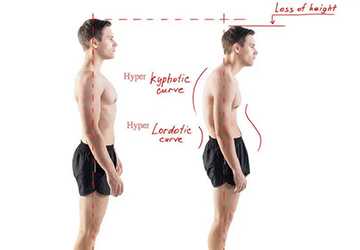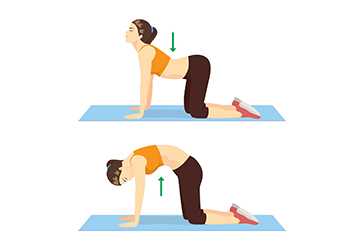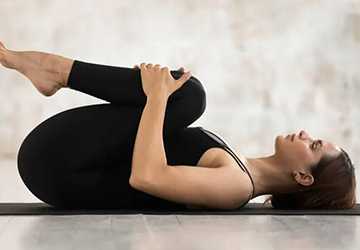Straighten Up - Techniques to Enhance Your Posture and Alignment
Improving your posture and alignment can make a big difference in your daily life. Good posture helps prevent pain, boosts confidence, and improves overall health. It also allows your body to function more efficiently, improving breathing, circulation, and digestion.

Whether you're at work, at home, or working out, good posture can help prevent musculoskeletal problems and improve your overall quality of life. Here are some simple tips and exercises to help you stand and sit straight and ensure your body functions at its best throughout the day.
Learn about Posture and Alignment
Posture refers to how you hold your body when standing, sitting, or lying down. Alignment refers to how your head, shoulders, spine, hips, knees, and ankles relate to and align. Good posture and alignment mean your body parts are in the correct position, allowing your muscles to work efficiently and avoid strain.
The Importance of Good Posture
Good posture is vital for the following reasons:
Pain Relief: Proper posture can prevent or relieve back, neck, and joint pain.
Improved Breathing: Standing or sitting upright allows your lungs to expand more fully, which improves your breathing.
Boosts Confidence: Good posture can make you look taller and more confident.
Improved digestion: When you sit up straight, your digestive system works more efficiently.
Common Posture Problems
Many people suffer from posture problems due to modern lifestyles. Here are some common issues:
Slouching: This is where your shoulders and upper back arch forward.
Slouching: This is often caused by looking down at your phone or computer. Your head juts forward from your neck.
Pelvic tilt: Sitting for long periods can cause your pelvis to tilt, leading to lower back pain.
Tips to Improve Your Posture
Be mindful of your posture:
Awareness is the first step to improving your posture. Check your posture regularly throughout the day and adjust if necessary. Set reminders on your phone or computer to check your posture every hour. Falling into old habits is easy, but consistent mindfulness can make lasting changes.
Set up your workspace:
Ensure your computer screen is at eye level, your chair supports your lower back, and your feet are flat on the floor. Invest in an adjustable chair and a sit-stand desk if you work at a desk. A monitor stand can help raise your screen to the correct height and prevent neck pain.
Use ergonomic furniture:
Buy chairs and desks that help maintain good posture. Ergonomic furniture can significantly improve the way you sit and work. Look for chairs with adjustable height, lumbar support, and desks that can be raised or lowered to suit your needs.
Take regular breaks:
Sitting for long periods can strain your muscles and lead to poor posture. Take breaks to stand up, stretch, and move around. Try the 20-20-20 rule: every 20 minutes, take a 20-second break and stand up to look at something 20 feet away. This reduces eye strain and encourages movement.
Strengthen your core muscles:
Strong core muscles support your spine and help maintain good posture. Incorporate core exercises into your fitness routine. Planks, bridges, and sit-ups are great for building core strength. Regular core training can make maintaining a straight, upright posture more effortless throughout the day.
Exercises to Improve Posture
Planks: Planks strengthen your core, shoulders, and back, helping you maintain a straight posture. Start by holding the plank position for 20 to 30 seconds and gradually increase the time. Ensure your body forms a straight line from head to toe and that your hips are not sagging or your back is arching.
Shoulder Press: Sit or stand up straight and squeeze your shoulder blades together. Hold this position for a few seconds and release. Repeat this movement 10 to 15 times. This exercise helps counteract the forward shoulder slump that often occurs when you are bent over.
Cat-Cow Stretch: This yoga pose helps to improve spinal flexibility. Start on all fours, arch your back (cat), then drop your belly and lift your head (cow). Repeat the exercise 10-15 times. This stretch mobilizes your spine and helps relieve tension in your back and neck.

Chest Stretch: Stand in a doorway and place your arms on the doorframe at shoulder height. Take a step forward and feel the stretch in your chest. Hold this position for 20-30 seconds. This stretch opens the chest muscles while bending forward can tighten them.
Wall Angel: Stand with your back against a wall with your arms at a 90-degree angle. Slowly raise and lower your arms while keeping them in contact with the wall. Repeat the exercise 10-15 times. Wall Angels help improve shoulder mobility and strengthen the muscles that support good posture.
Daily Habits to Improve Posture
Sleep Correctly: Your sleeping position can affect your posture. Sleep on your back or side with a pillow to support your neck. Avoid sleeping on your stomach, which can strain your neck and back. Consider a supportive mattress that maintains the natural curvature of your spine.
Stay Active: Regular physical activity helps keep your muscles strong and flexible. Try to exercise for at least 30 minutes most days. Walking, swimming, and yoga can help improve overall strength and flexibility, essential for maintaining good posture.
Wear Supportive Shoes: High heels and shoes without support can negatively affect your posture. Choose shoes that provide good support and comfort. Shoes with proper arch support and cushioning can help keep your feet aligned and reduce stress on your back and legs.
Carry Your Bag Correctly: An overweight bag can affect your posture. Use a backpack with two straps to distribute the weight evenly, or carry your bag close to your body. Avoid carrying a heavy bag on one shoulder, which can cause muscle imbalances and posture issues.
Posture Aids and Tools
Several tools can help you maintain good posture:
Posture Correctors: These wearable devices gently pull your shoulders back to promote proper posture. They can be worn underneath clothing as a constant reminder to maintain good posture.
Standing Desks: Alternate between sitting and standing to reduce back strain and improve posture. Adjustable desks can help you find the perfect height for both postures.
Foam Rolling: Use foam rolling to massage and stretch your back and chest muscles. Rolling over tight areas can increase muscle flexibility and reduce tension, helping to improve posture.
Conclusion
Improving posture and alignment requires awareness, effort, and consistency. By making minor adjustments to your daily habits, combined with exercises to strengthen and stretch your muscles, you can achieve better posture and enjoy the many benefits that come with it. Remember, good posture is more than just standing or sitting straight; it's about creating a balanced, aligned body that allows the body to function effectively and feel good.
Good posture requires mindfulness practice, regular exercise, and sometimes supportive tools. Start today by paying attention to how you sit, stand, and move. Over time, these small changes can significantly improve your posture and overall health.





